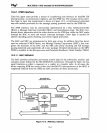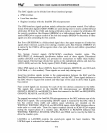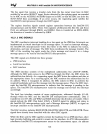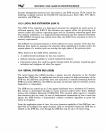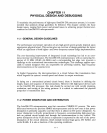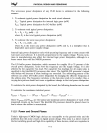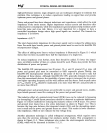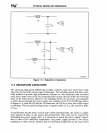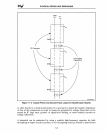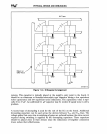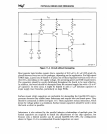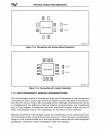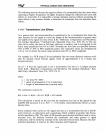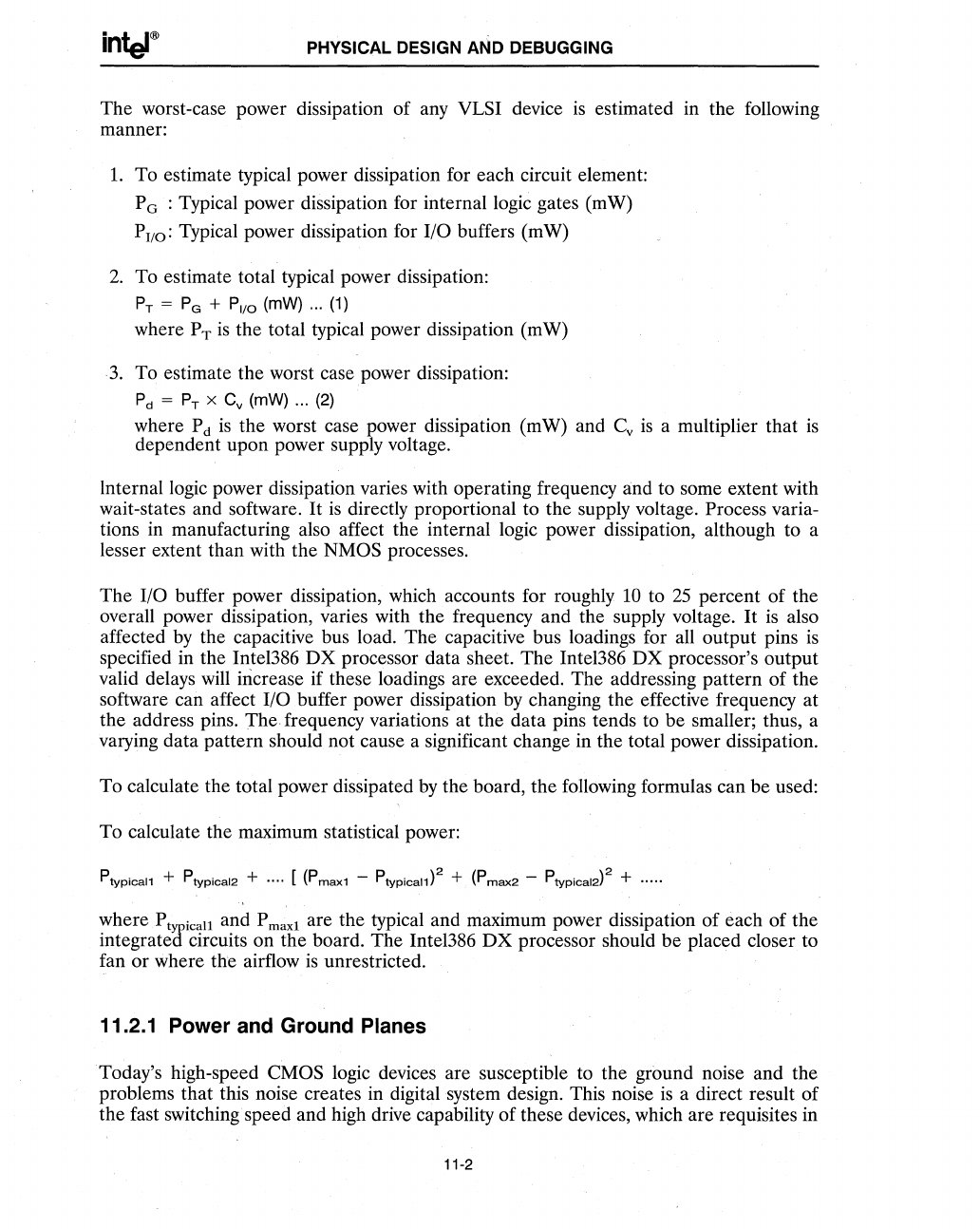
PHYSICAL DESIGN AND DEBUGGING
The worst-case power dissipation of any VLSI device
is
estimated in the following
manner:
1.
To estimate typical power dissipation for each circuit element:
P
G
:
Typical power dissipation for internal logic gates (mW)
PI/a: Typical power dissipation for
I/O buffers (mW)
2.
To estimate total typical power dissipation:
P
T
= P
G
+
PliO
(mW) ... (1)
where P
T
is
the total typical power dissipation (mW)
3.
To estimate the worst case power dissipation:
P d = P
T
X C
v
(mW) ... (2)
where P
d
is
the worst case power dissipation (mW) and C
v
is
a multiplier that
is
dependent upon power supply voltage.
lnternallogic power dissipation varies with operating frequency and to some extent with
wait-states and software.
It
is
directly proportional to the supply voltage. Process varia-
tions in manufacturing also affect the internal logic power dissipation, although to a
lesser extent than with the
NMOS processes.
The
I/O buffer power dissipation, which accounts for roughly
10
to
25
percent of the
overall power dissipation, varies with the frequency and the supply voltage.
It
is
also
affected by the capacitive bus load.
The
capacitive bus loadings for all output pins
is
specified in the Intel386
DX
processor data sheet.
The
Inte1386
DX
processor's output
valid delays will increase if these loadings are exceeded. The addressing
pattern
of
the
software can affect
I/O buffer power dissipation by changing the effective frequency at
the address pins.
The
frequency variations at the data pins tends to be smaller; thus, a
varying data pattern should not cause a significant change in the total power dissipation.
To calculate the total power dissipated by the board, the following formulas can be used:
To calculate the maximum statistical power:
PtypiCall
+
PtypiCal2
+
....
[
(P
maxI
-
PtyPicall)2
+ (P
max2
-
PtyPical2)2
+
.....
where P t
icall
and P
maxI
are the typical and maximum power dissipation
of
each
of
the
integrate~
circuits on the board. The Inte1386
DX
processor should
be
placed closer to
fan or where the airflow
is
unrestricted.
11.2.1 Power and Ground Planes
Today's high-speed CMOS logic devices are susceptible to the ground noise and
the
problems that this noise creates in digital system design. This noise
is
a direct result of
the fast switching speed and high drive capability of these devices, which are requisites in
11-2



